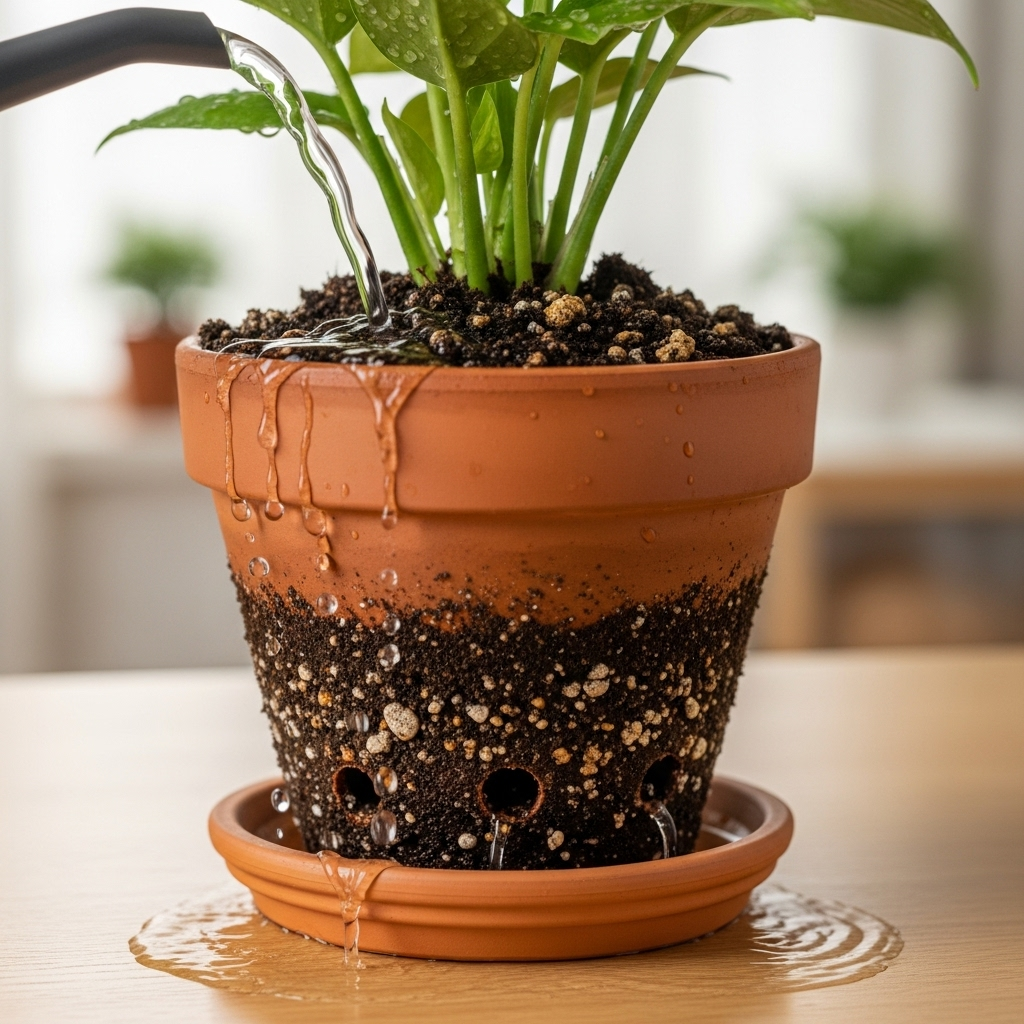One of the most important factors in keeping plants healthy is proper drainage. Without it, roots can suffocate, rot, and eventually kill the plant. Understanding why drainage matters and how to improve it will help your plants thrive.
What Is Drainage?
Drainage is the ability of water to flow through soil and out of the pot. Good drainage ensures roots get enough water without staying soggy.
Why Drainage Matters
- Prevents root rot: Excess water suffocates roots.
- Allows oxygen flow: Roots need air to stay healthy.
- Removes excess salts: Flushes away fertilizer buildup.
- Promotes stronger roots: Encourages deeper growth.
Signs of Poor Drainage
- Soil stays wet for days after watering.
- Yellowing leaves despite regular care.
- Mold or fungus on the soil surface.
- Mushy, foul-smelling roots.
How to Improve Drainage
1. Use Pots With Drainage Holes
Always choose pots with holes at the bottom. Place a saucer underneath to catch excess water.
2. Choose the Right Soil
- Cacti and succulents: Sandy, well-draining mix.
- Tropical plants: Rich but airy soil.
- Add perlite or coarse sand for better airflow.
3. Add a Drainage Layer
Place pebbles, gravel, or clay balls at the bottom of the pot to help excess water escape.
4. Avoid Overwatering
Even with good drainage, watering too often can cause problems. Always check soil before watering.
5. Repot When Needed
Over time, soil compacts and loses drainage. Refresh soil every 1–2 years.
Final Thoughts: A Key to Thriving Plants
Proper drainage is one of the simplest yet most effective ways to keep plants healthy. By using the right pots, soil, and watering habits, you’ll protect roots and ensure your plants grow strong and beautiful.

